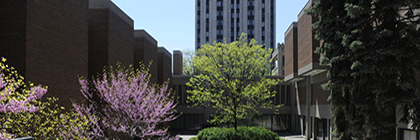The advantages and learning opportunities offered by Open Education will be at the heart of a virtual panel planned for Thursday, March 25, taking place, from 11 a.m. to 12:30 p.m. The event, which is free and open to the York University community, will be offered over the Zoom platform. It will feature a panel discussion on the use of open educational resources (OER) and open pedagogy.
Registration is required and can be completed at: https://scottlibrary.apps01.yorku.ca/machform/view.php?id=101554.
Participants will hear from York University professors, a course instructor, students and an instructional designer about their experiences with OER and open pedagogy. The panel is presented by the York University Libraries and the Open Education Steering Committee.

“As Open Education, inclusive of open pedagogy, finds fertile ground in York classrooms and libraries, the relationship students have with learning is changing,” says York University’s Dean of Libraries Joy Kirchner. “This event will demonstrate the innovative pedagogical opportunities that open education is creating – particularly in light of the swift pivot to pandemic related remote education – as an avenue to pursue evolutionary teaching practices and reimagined course delivery by making content co-creation possible through open practices, while also creating a pathway for affordable education. This may well be a catalyst for what will come next.”
There are a variety of ways to incorporate OER and open pedagogy into the classroom. This panel will showcase unique approaches from three disciplines and will also highlight how it improved the student learning experience. Participating in the panel are:
- Dawn Bazely, University Professor, Department of Biology, Faculty of Science.
- Deborah Davidson, associate professor, Department of Sociology, Faculty of Liberal Arts & Professional Studies.
- Matthew Dunleavy, PhD candidate and course director, Department of English, Faculty of Liberal Arts and Professional Studies.
- Jonathan Whatley, instructional designer, editor and writer.
Joining them will be three York University students:
- Iqra Aqib, third-year student in the Honours Human Resource Management program.
- Cheyenne Gumbs, graduate of York University’s Bachelor of Science program.
- Araceli Ferrara, fourth-year student in the Honours Theatre & History program.
Open educational resources are free, openly licensed teaching and learning materials that are created by educators and subject matter experts. They can take the form of textbooks, slide decks, assignments, and much more. They remove financial burdens for students and provide access to course learning materials on the first day of classes because they are free for faculty and students to use.
Open pedagogy, also known as open educational practices, create opportunities for students to become collaborators in the knowledge creation process. Building on the use of OER in the classroom, open pedagogy goes one step further as instructors use open educational practices to design assignments that allow students to practice knowledge creation in open, supportive learning environments.
To learn more about OER and open pedagogy, check out the University Libraries’ OER Guide and OER webpage.

















 ‘Brainstorm,’ a special edition of YFile publishing on the first Friday of every month, showcases research and innovation at York University. It offers compelling and accessible feature-length stories about the world-leading and policy-relevant work of York’s academics and researchers across all disciplines and Faculties and encompasses both pure and applied research.
‘Brainstorm,’ a special edition of YFile publishing on the first Friday of every month, showcases research and innovation at York University. It offers compelling and accessible feature-length stories about the world-leading and policy-relevant work of York’s academics and researchers across all disciplines and Faculties and encompasses both pure and applied research.








